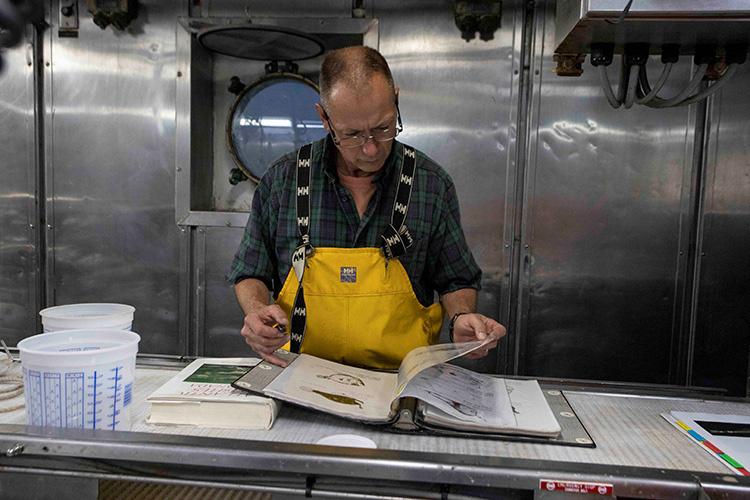August 4, 2019
We've kept quite busy with our schedule of Deep-See dives, CTD profiles, water samples, MOCNESS tows, and mid-water trawls. The weather has been unbelievable so we've been able to keep on a tight schedule. We will finish up our biological sampling on Monday and begin a large-scale acoustic survey to end the cruise.

We've been able to collect great acoustic and biological data, but getting images of the mesopelagic animals—those that live in the ocean twilight zone where light barely penetrates—has been challenging. We have a number of camera systems on Deep-See, and we even have a stereo camera system attached to the mid-water trawl. We borrowed CamTrawl, a self-contained stereo camera and strobe system, from the Alaska Fisheries Science Center and it is attached to the mid-water trawl near its cod end.

CamTrawl can obtain time-stamped images of the animals as they pass through the net, and then synchronize the depth profile with the images so we will know the depth at which the animal in the image was captured. But these fish seem to have something "up their sleeve" and have been adept at avoiding our cameras, or more precisely, our lights.
This "avoidance behavior" is not new; everyone who attempts to image or photograph animals in the water column has faced this challenge. I thought that we might be lucky enough to finally beat that behavior, but even in a constrained net, the animals seem to be able to avoid our illuminated area by going up/down and over/under the strobe flashes.

CamTrawl is attached to the outside of the net. The area close to its strobe is dark, just like the area around a flashlight is dark even when the beam is on. Most of the animals seem to be able to react quickly enough to sneak by.
That's not to say we haven't gotten any images - we have gotten some spectacular pictures of squid, salp chains (which are destroyed by the time they get into the cod end, so these images have been fantastic), jelly fish, and fish. We've even been able to see the photophore patterns on some myctophids, or lanternfish, and have been able to attempt species identification.
We've found that we've learned a lot, but have a long way to go.
Mike Jech
Northeast Fisheries Science Center
Co-Chief Scientist, HB19-07
Aboard the NOAA Ship Henry B. Bigelow




